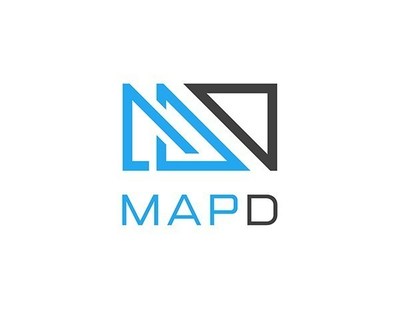
CGA's first project with MapD will focus on improving access to hydrological models used in water management and public safety. These models operate on large, dynamic data sets of stream flow and water depth measurements, along with detailed weather forecasts and field observations of streams, reservoirs and other hydrographic features to generate hundreds of millions, or even billions of flow, saturation and inundation predictions.
The U.S. National Water Model, for example, uses observations from 7,000 river gauges and other monitoring points, along with weather models and other data sources, to make hourly predictions based on conditions at 2.7 million stream outlets and 1,260 reservoirs. The results are available for daily download or as preprocessed visuals, but are not presently available in an interactive application, nor regularly combined with other information. The computing demands were previously too great.
It is hoped that GPU-based analytics will support faster visualization of data sets like the U.S. National Water Model and enrich them with data such as flood or drought vulnerabilities, local population densities, emergency response availability and even social media sentiment about water policies.
Such technology could be used for new projects, possibly including a study on how political partisanship affects the geographic sorting of voters, according to Ben Lewis, Geospatial Technology Manager at the Center for Geographic Analysis.
"Large spatio-temporal datasets are difficult to analyze," Lewis said. "The number of data points involved, and the need to join them with external sources can overwhelm CPU-based systems. We've traditionally relied on data preparation and massive computing resources to get jobs done in a reasonable amount of time. We hope to explore whether a GPU-based platform will enable testing hypotheses as we think of them, using a fraction of the computing resources at a much lower cost."
CGA will deploy a MapD resource that includes an open source database, open source visualization libraries and the MapD Immerse visual analytics client. As part of the project, CGA will identify opportunities to add new geospatial features to the MapD platform, improve its general interoperability and extend support for Open Geospatial Consortium (OGC) standards.
"Our relationship with the Center for Geographic Analysis extends back to 2012," said Todd Mostak, CEO of MapD Technologies. "We're excited to strengthen the connection and work with CGA to help build a vibrant open-source community. We hope to explore ways together to make the technology even more useful and widely available to the academic community and to work to accelerate research at the CGA and advance the state of the art for geospatial analytics everywhere."
About MapD Technologies
MapD Technologies is a next-generation analytics software company. Its technology harnesses the massive parallelism of modern graphics processing units (GPUs) to power lightning-fast SQL queries and visualization of large data sets. The MapD analytics platform includes the MapD Core database and MapD Immerse visualization client. These software products provide analysts and data scientists with the fastest time to insight, performance not possible with traditional CPU-based solutions. MapD software runs on-premise and on all leading cloud providers.
Founded in 2013, MapD Technologies originated from research at the MIT Computer Science and Artificial Intelligence Laboratory (CSAIL). MapD is funded by GV, In-Q-Tel, New Enterprise Associates (NEA), NVIDIA, Vanedge Capital and Verizon Ventures. The company is headquartered in San Francisco.
Visit MapD at www.mapd.com or follow MapD on Twitter @mapd. For more information or to evaluate MapD, contact Email Contact. Press inquiries, please contact Email Contact.
View original content with multimedia: http://www.prnewswire.com/news-releases/mapd-to-collaborate-with-the-center-for-geographic-analysis-at-harvard-university-to-accelerate-research-with-gpus-300505042.html
SOURCE MapD
| Contact: |
| MapD
Web: http://www.mapd.com |